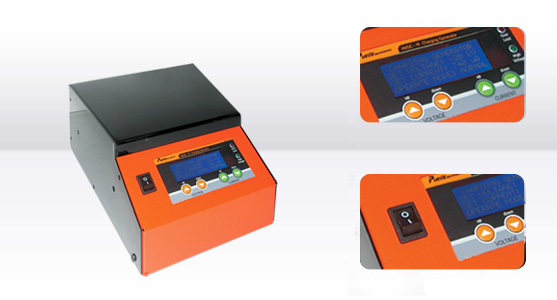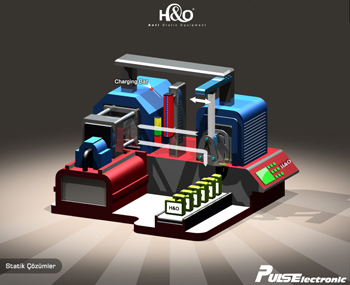
Static Charging Generator is appropriate for high voltage applications and for powered bars. The unit's output voltage and protection current value are digitally set by using front panel. The output voltage can be set between 0kV-20kV and as to current it is between 0 -1mA. The power supply includes remote on/off and remote voltage adjustment settings and also can produce both positive and negative charges.
Static Generator provides convenience in its using. It is easy to install. The front panel turning to 180° was made to archive the easement in use. Static Generator is fitted out of digital output setting and 4xHV output to utilize the high voltage applications and charging bar.
Static Charging Generators 30, 60, 100, 120kV are also in production.
General Specifications
Easy to install / Digital output setting / Rotating front panel by 180° / 4 x HV output
Applications
In mould labelling (IML) / Bags on roll / DVD manufacture / Board laminating / Compensating stackers / Film winding to roll cores / Flat bag with gusset / Multi sheet feeders / Side weld bag handles / Shrink wrapping / Electrostatic bonding
Technical Specification
Main Voltage: 220-230V AC / 110V AC
Frequency: 50 Hz / 60 Hz
Max Input Power: 45 Watt
Main Connection: IEC-320 Europe type
Fuse: 3.15 AT
Output Voltage: 0 x 20kV
Ripple, peak - peak: %5 output voltage at. max load
Max Output Current: 1mA
Max Output Power: 20 Watt
Polarity: N=Negative / P=Positive
Short Circuit Protection: Short Circuit Current Adjust
Ambient Temperature: 0 - 60 ºC
Voltage Stabilization: %0.5 at max output voltage and load
Remote Control: 0V=Off 12-24V=On on/off control
0-10V DC 0-20 Kv output voltage control
Opto coupler output for exposing device trouble
Input-Output Connectors: 4xHV output, 1x I/O Sub-D 25
Weight: 4.2 Kg
Application
In moul labelling application sheet

During in-mold labelling applications, the label can be attracted or repelled from the surface of the mould dependant on what charge is on either surface. The robot arm will pick the label and position the label.
If the label is the same polarity as the surface of the mould, the label will be repelled from the mould and rejected. If the label is of the same polarity, the label can be attracted from the robot arm and misaligned.
By neutralising the mould prior to the label being applied you will have a neutral surface to position your label onto. Then using a PULSElectronic generator and charging head (fitted to the robot arm) you can use the static charge to stick the label into position.